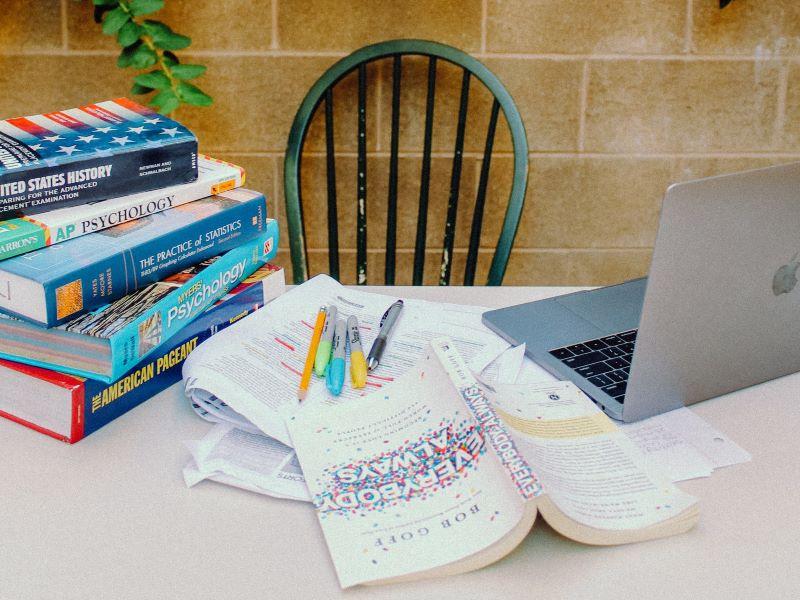
How to use visual media to spur inquiry-based learning online
Key Details
This video will cover:
01:10 Mapping visual media on to six key learning types
02:15 Developing an image-based concept inquiry cycle to use visual media to support learning
05:32 How to think about concepts through images
Transcript
Hello. My name is Nataša Lacković, and in this short video I’ll talk about using visual media to enhance online learning practice.
Diverse visual media – or, in other words, graphics – can be embedded in online learning to act as central resources in a learning inquiry. Individual teachers will adjust activity designs and analysis to distinct media and learning goals.
Here are a few examples of different visual media that can be provided by the teacher or students, such as paintings, photographs, illustrations, graphic novels and documentaries. When it comes to the media and motion, such as videos or documentaries, teachers or students can choose very focused parts that they find most salient in terms of their dialogic and reflective potential.
I’ll now provide an example of how to embed visual media in online learning by introducing a dialogic activity cycle with photographs mapped on to six learning types. Six learning types stem from the work by Diana Laurillard, which was developed into an ABC learning design by Clive Young and Natasha Perovic.
The learning types cards contain brief definitions; you can pause the recording to read the cards if you are unfamiliar with this approach to learning design.
Production also involves creative engagement, which means to create an output based on the learning goal. I’ll provide the link for visually impaired learners in the video transcript. I shall proceed to exemplify how all the six learning types can be embedded in a visual dialogic design.
The visual dialogic design that I’m presenting is an image-based concept inquiry, or an IBCI, cycle, which is part of a larger field I developed called inquiry graphics. As mentioned earlier, I will focus on photographs in the example.
First, the teacher chooses a learning concept or objective. This can be a key term, a question, a challenge, a problem or a theory. The teacher may consult students about which concept to choose. Students first engage in the process of acquisition, reading, watching, listening to the materials linked to the concept. As an example, let us take the concept of “constructivism”, a learning theory in educational psychology.
I’ll use this concept to exemplify image concept types once I introduce the whole activity cycle.
The next step in the cycle is to invite students to go from acquisition to investigation and production, which means they would explore different resources about the concept and find or create an image that represents an aspect of that concept from their point of view, and building on any readings.
Of course, no image can share one concept but only an aspect of it.
Once they have selected or created an image, students are encouraged to engage in production and write an explanatory image concept narrative, or perhaps you wish to call it a reflective or critical narrative, about how the concept and image relate. Students can develop their narratives individually or collaborate in pairs, or groups. I'll exemplify a possible instruction for this narrative after I present the whole activity cycle.
The next step is for students to upload their images and narratives to a designated digital space as appropriate; for example, a forum or a WordPress blogging platform, perhaps it can be part of student e-portfolio. This could be a collaborative activity.
And finally, the cycle closes with discussion, which embeds practising the concepts, through discussion and peer and teacher feedback. It is important to note that learning types – or, as I call them, acts – overlap in activities. There are commonly no strict boundaries when one finishes and the other begins.
I’ll now present diverse icons to consider different digital media that can be associated with different learning design steps and types, such as resource list on Moodle, YouTube, ERIC search engine, Wikipedia, Google Scholar, Google image search, Padlet, Wakelet, PowerPoint, Microsoft Word.
And I’ll now move to the ideas on how to think about concepts through images. There are many possibilities in terms of how to approach the task of bringing together a concept and an image. We’re not used to thinking about concepts through images, so here are some ideas how to do that.
I developed 11 image concept types, and here I’ll continue exemplifying these through the concept of “constructivism”, so we can discuss, analyse and critique the concept on constructivism in relation to an everyday activity or personal experience.
We may consider a stereotypical image of constructivist learning or a metaphorical representation through an image of scaffolding. We may think of what conditions are needed for constructivist learning to happen and think about particular places and contexts. The concept could also be explored by considering the production of an artefact, as an outcome of constructivist activity such as in this case, a DNA helix. We may wish to consider an unusual representation that challenges the boundary of the concept, such as the 19th-century corpse dissection demonstration, or what depiction is an opposite to constructivist learning, how the concept has changed over time, how it materialises in different cultures and social circumstances, and focus on an object to explore the concept of constructivism and related concepts such as constructionism through this image of logo programming output.
Further explanations and clarifications can be found via this link.
For anyone seeking some instructional support for narrative generation, here are five steps that can be addressed in student narratives, going from thinking about the concept to concept picture inference.
And this is where the presentation ends. I hope that it was useful. Please get in touch to share your visual learning designs and how you would apply the IBCI design cycle. Let us transform online learning with visual media.
Nataša Lacković is a lecturer in the educational research department at Lancaster University.
Additional Links
An introduction to ABC Learning Design
Further explanations and clarifications about applying the image-based concept inquiry cycle


